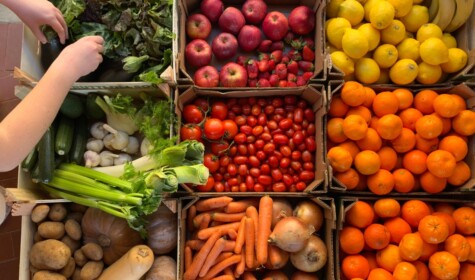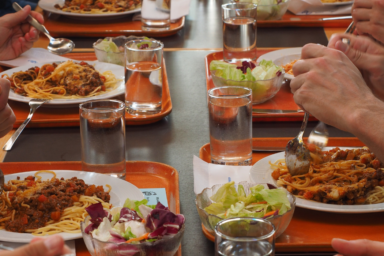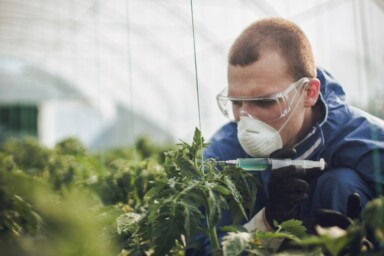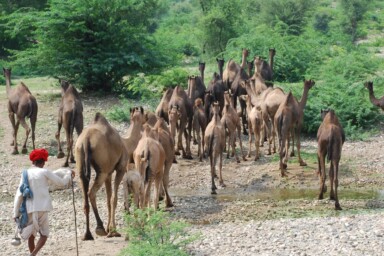Does the School Fruit and Veg Scheme need a rethink? The School Fruit and Vegetable Scheme (SFVS) was introduced after the NHS Plan, launched in 2000, included a commitment to implement a national fruit and vegetable scheme by 2004. It was in response to a concern that not enough children were eating fruit and veg on a regular basis. The scheme is part of the national 5 A Day programme and it was set up to get children into the habit of eating fruit and veg every day, giving them a healthy start to life and reducing the risk of chronic disease as they grow up. Does the School Fruit and Veg Scheme need a rethink?
The scheme provides a piece of fruit or veg to all infant aged children between the ages of 4 and 7 who attend a state-funded primary, infant or special school. There are approximately 2.3 million children in the scheme, which involves around 16,600 schools in England and provides roughly 450 million pieces of fruit or veg each year. It is a major operation.
Running such a scheme every school day throughout the academic year means that not all the fruit or veg can be procured from the UK. In addition, due to the budgetary constraints of the scheme and the need for high volumes at cheap prices, it is often easier for fruit and veg to come from overseas, where standards of production are lower and costs cheaper. Over 50% of the scheme’s fruit and veg is grown outside of the UK.
A particularly extreme example of this was when a delivery of sugar snap peas arrived in schools in the middle of summer with a label on the packaging that confirmed that this summer fruit had come from China. This was due to the fact that the local producers in Worcestershire had run out. The fact that sugar snap peas could be produced in China and transported all the way to England for the same price as sugar snap peas from Worcestershire makes one wonder what kind of system produced them in the first place.
A report carried out by the Soil Association in 2018, showed that there were higher levels of pesticides in the produce for the scheme when compared to supermarket equivalents. The food was also not fresh as it had travelled such long distances and this poor quality produce was putting children off eating fruit and veg, the exact opposite of what was intended.
Having seen this fruit and veg scheme in action since its inception during my time as Headteacher of a state primary school, I applaud the good intention to get children eating fruit and veg on a daily basis, but I think the scheme needs to be reviewed in four important ways:
Firstly, if we know how many pieces of fruit and veg we are going to need each day over the school year, surely, we should be identifying the farmers and growers here in the UK who can provide the quantity and quality we need, ensuring the maximum amount of fruit and veg can be grown in this country? It may be that we don’t have the capacity to meet the current demand and we need to plant and grow more fruit and veg. With this vision in mind and with a commitment to make it happen, we could within a few years meet the challenge of sourcing as much high quality fruit and veg as possible within the UK.
Secondly and wherever possible, how can we link the places where the fruit and veg grows to the locality of the schools, so that we reduce the food miles and travel time for the fruit and veg being delivered to the schools? This would need a much more localised procurement system with regional centres, rather than a central hub. It would need time to establish local teams and centres, but if money were able to be saved on UK and overseas travel and transport costs, not to mention the pollution along the way, the localising of these food systems would make so much more sense and contribute significantly to a healthy scheme all round. I spoke to some Headteachers in Herefordshire about the infant fruit and veg scheme and none of their fruit came from their own county with its many fruit orchards. They were receiving packaged fruit from countries far away, when they had fresh fruit growing just down the road.
Thirdly, and with so much concern about biodiversity loss in the UK as we work with heavily industrialised models of farming and food production, how might we be able to find ways to incentivise the procurement of a good percentage of the fruit and veg our children eat from organic or more sustainable sources? If we apply the polluter pays approach to food and farming, these healthier systems, which cut out the harmful use of pesticides and insecticides, as well as the nitrogen fixing fertilisers that so damage our soil and water, could become the preferred means of procuring fruit and veg, as they would cost less. The scheme could even become a valued part of a national programme to increase UK biodiversity.
Finally, if we took a more creative approach to this scheme, we could link the fruit and veg the children consume each day to a wider programme of learning, so that they understand both the benefits of healthy eating to their own health, and the benefits of more localised, seasonal and, where possible, organic produce to the wider well-being of the world they are going to inherit. It is this sort of joined up thinking around learning that will enable our children to make sense of what they learn as they look to build a more sustainable future.
The scheme has much to commend it, but it is part of a system that is currently contributing to the problems of a highly polluting, industrialised model of food production that needs to change for the future well-being of the planet and the children whose fruit and veg the scheme is supporting. It is in the detail of schemes such as this, that we will find the solutions to the problems we face. If we can engage our children in a better understanding of these challenges and the role they can play in creating healthier, alternative models, then we really can address the issues of sustainability through what our children learn and eat every day.







